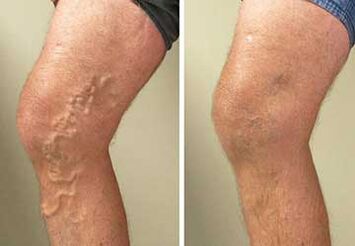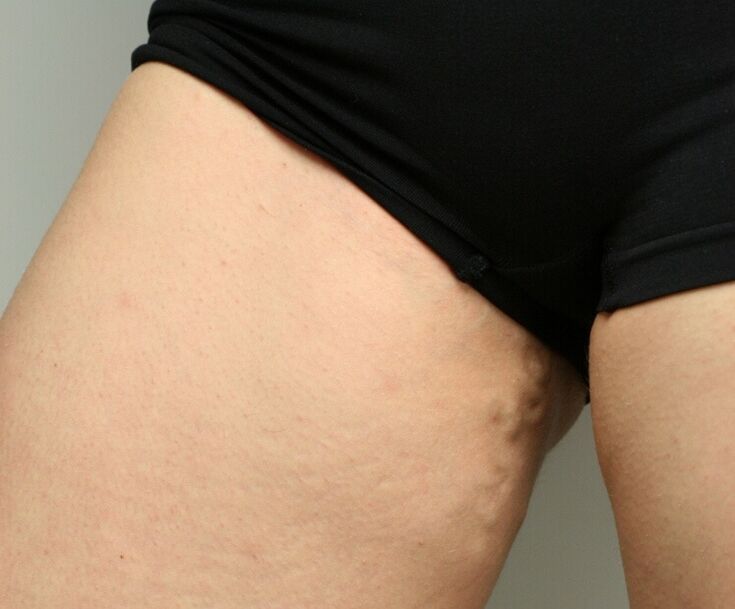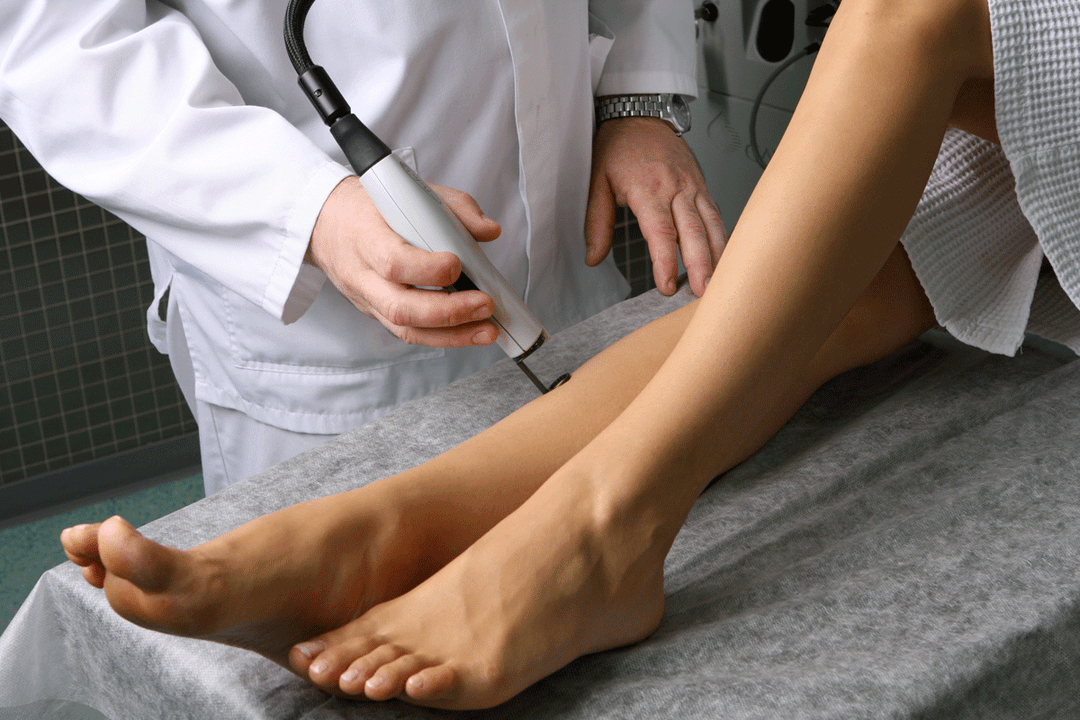In the human body, oxygen and necessary nutrients are provided for the appropriate metabolic process, providing a network of blood vessels: arteries and veins. The blood filled with oxygen flows through the arteries, and the blood from the processed product flows through the veins: carbon dioxide and waste from the metabolism process, which require delivery to the organs to remove it from the body. However, if the blood flow is high along the artery, the blood slowly decreases in the veins and the blood contained therein slowly overcomes the intensity of gravitational attraction, thereby restoring the heart. Therefore, blood without mechanical outflows out flows downward veins, providing a valve that opens upwardly in only one direction. After closing them, the blood cannot flow down. However, for a variety of reasons, these valves lose elasticity, elasticity, and are not closed, which allows a portion of the blood in the vein to be reduced and accumulate in the vein in a large number of veins than the laws of physiology provide.

Excessive blood can cause veins to expand and cause changes in the wall of blood vessels - forming pockets where stagnant blood is collected. All of these pathological processes are called - varicose veins or varicose veins. Varicocele is usually manifested on the legs because a large amount of venous blood is collected here, but it is rarely seen in hands. What contributions are there?
Causes of varicose veins
In order to develop any disease, there must be tempting factors and thought-provoking. The first one includes:
- The genetics of the intransitive structure of the circulation system, especially valve equipment,
- The innate changes of ships,
- Violating the metabolic process leads to sparse and loss of elasticity of the blood vessel wall (diabetes, Milotis, violating thyroid function and adrenal function),
- Age changes in the ship wall.
Provocative factors:
- A sedentary lifestyle where no necessary muscle work can contract and mechanically push blood through blood vessels,
- Standing on your legs for a long time during the day (teacher, hairdresser, behind the factory machine, etc. ),
- Too much weight,
- Pregnancy (metabolic changes and increased leg load, intravascular pressure increases during delivery),
- Long and frequent physical fatigue, weightlifting (pole, moving),
- Muscle injury to the limbs or blood vessels,
- The toxic effects of nicotine, alcohol, chemicals, drugs.
Clinical manifestations of varicose veins on the arm and legs
- It all starts with complaints of fatigue in the legs or hands, their rapid fatigue, a feeling of severity and numbness first appears at the end of the workday and then continues to appear.
- Swelling, swelling appears, and is more commonly observed on the legs at night.
- The extended blood vessels become obvious, first of all the physical fatigue and stress, and then visible in a static state, the so-called blood vessel stars.
- Confusion (cone) appears along the blood vessels, increasing volume when the body is tired or coughing, sneezing (as the pressure in the abdomen increases).

Varicocele in the pelvic vein
It is characterized by long-term pain in the pelvis, large excretion of vagina, painful sexual behavior, rapid urination and urinary incontinence. After pregnancy and delivery, tumors in the pelvis and uterus are an outrageous factor, which can mechanically squeeze the veins and increase intraperitoneal pressure. Pain can be given anywhere in the abdomen, but it is more common in the groin and ac bones.
Venous expansion in the intraperitoneal space
The most dangerous dilation of the liver vein (portal vein) and the esophagus. They are less frequent in expansion but are posed dangers to health due to possible bleeding, which means difficulties in providing medical services in this case.
Risk complications of varicose veins
- Venous blood can stagnate in the veins and will not be cleaned from harmful substances and toxins over time, which means the body is constantly experiencing self-reflection, which further exacerbates metabolic diseases and poisoning.
- In the nodes or pockets of the blood vessels, blood cells (platelets) are bonded together to form a thrombus. It can close the lumen of the same blood vessel and can flow blood to the blood vessels of the lungs, heart, and brain, and cause invasion of the blood supply, which is manifested as:
- Acute pulmonary thromboembolism (respiratory violations lead to death of patients),
- Function-violating strokes may have different properties (from minor academics of the limbs to deep disability, or even fatal consequences),
- Myocardial infarction and light,
- Blood vessel thrombosis, resulting in blindness.
The stage of varicose veins
First is the complaint stage where there are no visible signs of vascular damage:
- The muscles on the back surface of the legs, brushes and shoulders are twitched tightly;
- The pain that burns them at night;
- The swelling of the feet and hands after physical fatigue. If you lower your hands or legs specifically, hold them for a long time without movement, then the shoes in the evening will start to cause leg discomfort.
The second - the pain lasts more in intensity, longer "vascular stars" appear, and the swelling of the feet may not pass through during sleep until morning. There are restrictions during work and short rest is required.
The third - the aggravation of pain and numbness, playing a constant feature that burns more at night, and it is difficult for a person to find a convenient location during sleep. The skin showed obvious visual changes - the skin had a tendency to dryness, cracking, veins were significantly expanded, and nodules appeared. Rest at night does not relieve well-being. For long-term non-complete ulcers, their inflammation will be added to the later stages - thrombotic cysts.
Diagnosis of venous dilation
- Correctly evaluate patient complaints.
- Ultrasound examinations are performed through the abdominal wall or vagina to cause pelvic pain – the presence of batch bending and the expansion of the lumen will be obvious.
- Multi-position allows you to estimate the speed at which blood flows through the veins.
In heavy and less understandable circumstances, surgeons resort to laparoscopy.

Treatment of varicose veins
Not a drug treatment - normalize the correct lifestyle to maintain weight relative to age, rest and work and be able to walk, rather than limiting fluid intake. For the rest of the process, raise the legs. If necessary, use compressed underwear (stockings, golf). Massage courses, exercise therapy, hydrotherapy.
Medication treatment - Take medications specifically in tablets or use local ointments and compressions in application form
Surgical treatment - designed to remove damaged veins or their plastic.
How to prevent the development of varicose veins
- People at risk (drivers, hairdressers, tailors, surgeons, workers-heavy workers) should listen carefully to changes in their bodies while paying attention to and assessing pain syndrome and not writing off everything for ordinary fatigue.
- Try to rule out long-term forced postures of the body - sit on another knee and sit "squat down". Change the position of the body more frequently.
- During the day, do a little warmth - walk (let the body forward and backward, squat), so this will allow muscles to be mechanically pumped into the blood vessels to the limbs. Run a little or jump.
- Follow and perform weight corrections, especially in adulthood, when blood flow tends to decrease.
- Do not wear tight clothes, not delayed linen.
- Change the heel height from high to low during the day. I prefer high heels 2-5. 5 cm tall.
- Make sure to walk barefoot in artificial gravel (carpet with needles, mimicking shells).
- A healthy diet high in vitamin C (green, sauerkraut, berries).
- Eliminate bad habits.
- Massage courses or lymphatic drainage courses.
- If there are no contraindications (disc hernia) - Scandinavian walking, please participate in swimming.
Note: Varicose veins are progressive, it cannot be completely cured, and its complications are dangerous. You need to always remember this and take precautions so you won't ignore them from a young age. Caring for leg health is healthy for the elderly.


















